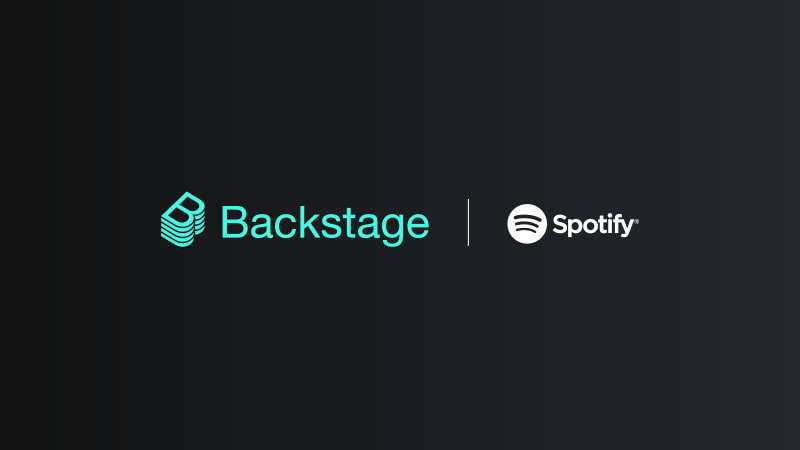The Birth of Backstage: A Case Study of Spotify’s Developer Platform
In the fast-paced world of software development, managing an intricate network of services and teams can be a daunting task. Spotify, constructed on a microservices architecture and home to numerous autonomous teams, found itself grappling with these complexities. In response, Spotify required an Internal Developer Platform (IDP). An IDP is designed to standardize developer workflows, abstracting away the complexities of the underlying infrastructure and enabling developers to focus more on coding and less on configuring and managing their environments. The value of an IDP lies in its ability to accelerate the software development lifecycle and improve productivity by providing a self-service interface where developers can create, manage, and deploy their applications. Spotify aimed to resolve these challenges with a solution called Backstage. Let’s explore the journey of Spotify’s creation of Backstage and its far-reaching implications.
The Problem
Spotify’s astronomical growth rapidly transformed it into a sprawling ecosystem of services. Housing hundreds of autonomous teams each working on an array of software components, Spotify soon faced the daunting reality of a fragmented and convoluted developer experience. Its infrastructure became a labyrinth of multifaceted tech stacks, redundant tasks, and disparate documentation, each making infrastructure management increasingly complex.
This intricacy led to inefficiencies, slowing down the development process and eating into productivity. Spotify recognized these challenges and realized the pressing need for a more cohesive, user-friendly system. A system that could streamline developer operations, enhance productivity, and enable the continuous delivery of high-quality software.
The Solution: An Internal Developer Platform (IDP)
In an innovative response to these challenges, Spotify conceived and constructed its IDP, designed with a singular aim: to simplify and streamline the software development process. The objective was to build a familiar, intuitive interface that developers could use to interact with, manage, and maintain their software, just as easily as they would with any web application.
The design of the platform was based on three core principles. First, a unified front end, offering a single, consistent interface for all infrastructural tools. Second, a standardized backend, reduces complexity and fosters consistency. Lastly, a flexible platform for developing custom plugins, allowing teams to adapt the platform to their unique needs.
The Execution: Backstage
The launch of Backstage heralded a new era in Spotify’s software development journey. It provided a standardized, user-friendly UI and a navigable catalog of all software components, significantly reducing the complexity of managing services. The previously convoluted developer experience was now simplified, more efficient, and more pleasant.
A key feature of Backstage is its flexible plugin architecture. This feature allows teams to create custom plugins that represent the various infrastructure tools with which developers interact. This has resulted in a unified, user-friendly interface that simplifies and enhances the development process.
Its Impact on Spotify
The introduction of IDP transformed the developer experience at Spotify. It provided a platform for a higher degree of standardization, consistency, and ease of use across a myriad of tools and services.
Teams found themselves with more time and resources to devote to developing new features and services, rather than wrangling with a complicated infrastructure. The plugin architecture of Backstage also reduced redundancy, as it encouraged the reusability of solutions.
Understanding the potential of Backstage IDP, Spotify took the decision to open-source the platform in March 2020. This move has allowed other companies to benefit from the unified, streamlined developer experience that Backstage offers.
Backstage stands as a testament to Spotify’s proactive and innovative approach to problem-solving. It transformed a complex network of operations into a streamlined, cohesive system. Backstage offers valuable lessons for other companies navigating similar challenges and has the potential to become a vital tool in the world of software development.
Backstage as a production-ready IDP
Rather than conceptualizing Backstage as a ready-to-use product, it’s more apt to perceive it as a versatile framework. Its installation alone does not unlock its full potential — it requires the backstage managing team to curate its setup in a way that addresses users’ needs. Backstage thrives on its powerful plugin system, each tailored to resolve developers’ challenges. Therefore, we can consider it to be the scaffolding of what an Internal Developer Platform should be.
Backstage may not be the go-to solution for every organization. It does shine in visualizing and implementing self-service layers, courtesy of its intuitive plugin system. Still, crafting the Developer Portal that precisely caters to your developers’ unique needs might demand significant amounts of coding. If your DevOps engineers lack the necessary proficiency and experience in fast UI component development, you could end up facing tedious challenges.
The development of such a multifaceted product necessitates a seasoned team to steer its course. To use Backstage successfully, your organization would need to boast a dedicated ensemble of DevOps Engineers, Senior Full-Stack Engineers, and a Product Owner, then it would make Backstage a good choice as an IDP.
If you don’t want to let the complexities of application development slow down your innovation, take the leap with Napptive today and discover the power of a fully-featured, production-ready Internal Developer Platform (IDP). With Napptive, you can streamline your workflows, simplify your cloud-native deployments, and foster seamless collaboration within your team. Try Napptive, for free now!








Top comments (0)